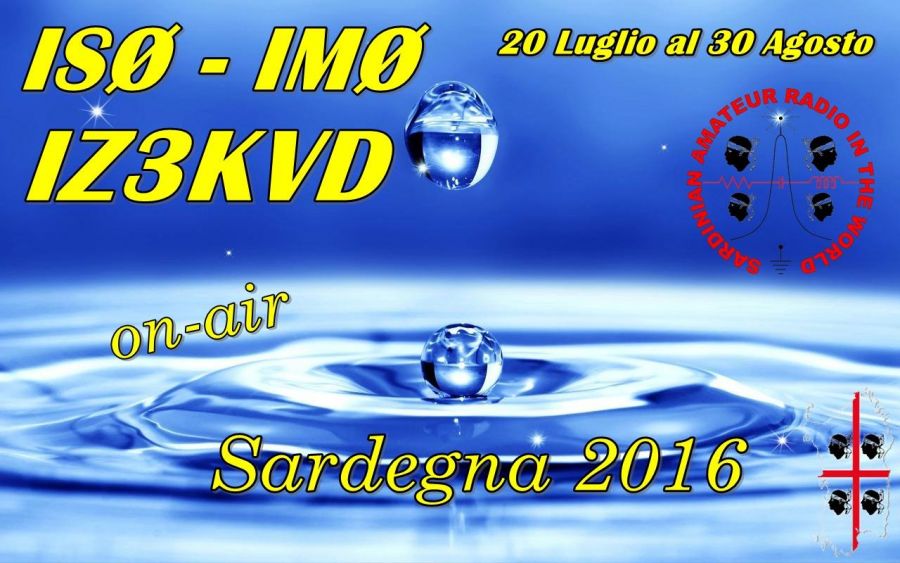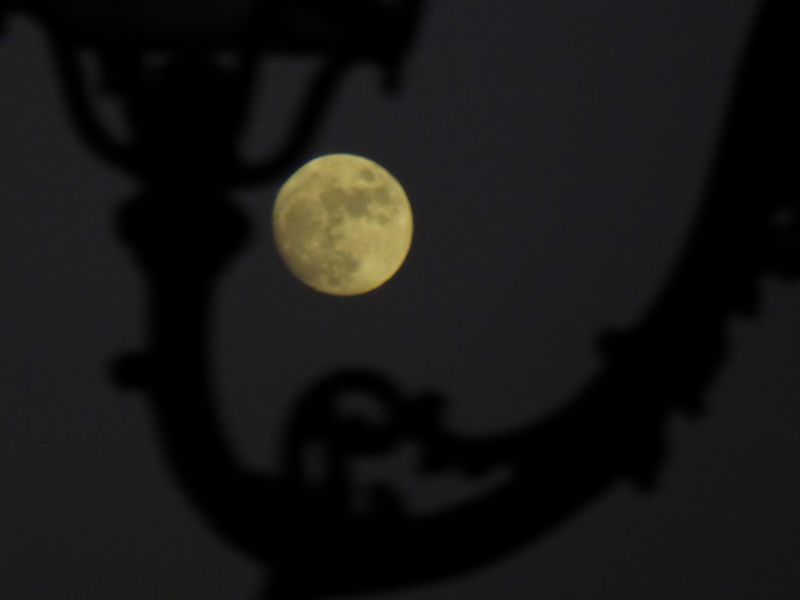Giorgio, IZ3KVD will be active from Sardinia Island (IOTA EU-024) 20 July - 30 August 2016 as IS0/IZ3KVD.
He is planning to be active also from Sardinias Coastal Islands (IOTA EU-165) as IM0/IZ3KVD.
He will operate on HF and 6m Bands.
QSL via home call.
Ads for direct QSL:
Giorgio Laconi, Via Perine, 4, 31020, Villorba, Treviso, Italy.
Sardinia
There are places on earth that you need to take a closer look at, feel the atmosphere, and understand their uniqueness before you can fall in love with them.
But with the island of Sardinia, it's easier: it's impossible not to like it, impossible not to fall in love with it at first sight, and if it happens that everything, absolutely everything, is interesting and very beautiful — that's it

Sardinia. IS0/IZ3KVD IM0/IZ3KVD.
Wind, sun, and water work wonders
Every part of Sardinia is unique. Mountain landscapes, eucalyptus and pine forests, and snow-white sandy beaches in the south. Giant pink boulders and small sandy coves in the north. High two-kilometer peaks of a mountain reserve in the east and turquoise waters with rice beaches in the west. No, there are no rice plantations there—just small transparent pebbles resembling rice that replace the sand on these beaches. This creates an incredible effect of transparency and purity everywhere: not only in the emerald water, but also on the beach
There are about four hundred beaches, and they are all different: pebble and sandy, grassy and rocky, wild and well-maintained, snow-white, golden, and pink. Very often, the granite of the local rocks has a unique weathering pattern that looks a bit like honeycombs. These are called tafoni, formed by the sun, sea waves, and salty wind.
The famous Bear Rock, over 120 meters high, has also been shaped by the forces of nature into the form of a bear with its head turned towards the sea. The huge beast seems to be peering into the distance, watching for any sign of a threat to the island.
All this beauty is not man-made, but the inhabitants of Sardinia are not far behind nature: the masterpieces created by their hard-working hands leave no one indifferent, whether they are connoisseurs of beauty or gourmets.

IZ3KVD QSL.
Sheep are not only valuable for their wool, but also...
The Sardinians often joke that there are two sheep for every inhabitant of the island. This is not so much a joke as it is the absolute truth. The abundance of seafood has no influence on the customs and preferences of the islanders.
Long ago, sheep breeding became a necessity, as frequent pirate attacks forced the Sardinians to move deep into the island, where there was no fish. They bred animals, taming wild mountain sheep and goats. The mild climate seemed to help the islanders – it was very easy to graze sheep.
Nowadays, no family can imagine their diet without aromatic cheese made from sheep's milk or whey. The famous and delicious Podda, Ricotta, and Pecorino cheeses are produced in Sardinia. What makes them most valuable is that they are mostly made by hand and with great love.
The world-famous cheese Casu Marzu, or “rotten cheese,” is also produced here. Its worldwide ban was due to the method of production: fly larvae are added to the cheese, which cause it to rot and, as they multiply, eat it from the inside. The result is a soft cheese mass with a crust, and inside this mass are live larvae. During eating, the larvae can jump out of the cheese quite high, so it is advisable for extreme foodies and gourmets to wear special goggles to protect their eyes while eating this amazing delicacy. By the way, if the larvae inside have already died, the cheese becomes very dangerous to eat. Serious poisoning is simply unavoidable.
Another long-standing tradition on the island, associated with sheep, or more precisely with their wool, is the manufacture of Sardinian rugs. Initially, they were made only for domestic use (but even then they were very exquisite and beautiful), but now these rugs are a definite hallmark of the island. Completely natural, using natural dyes (made from plants that grow exclusively in Sardinia) and handmade, they are very attractive. The iconographic ornamentation, rooted in the island's history, is the main distinguishing feature of any Sardinian rug. Nowadays, in addition to sheep's wool, goat's wool, cotton, linen, and hemp are also allowed. The requirement that all components be natural has never been violated.
In general, there is so much natural beauty on the island of Sardinia that you want to forget about the benefits of civilization for at least a while, and the traditions, historical monuments, and archaeological finds are as unique as everything else about the island.
 Moonlight, Sardinia. Author - Valter Manetta.
Moonlight, Sardinia. Author - Valter Manetta.
Murales, nuraghi, and everything else
For art lovers, the word “murales” means a lot. This art form originated in Sardinia in the last century and consists of drawings on the walls of houses. The style of painting can be anything, and both professionals and amateurs can paint. It is like a wall newspaper where everyone can express their opinion on a particular issue through images. These “wall newspapers” give the city streets a certain charm.
The Nuragic civilization, which inhabited Sardinia in ancient times, has become a great mystery for researchers and historians around the world. The structures they left behind are tall, sometimes up to 20 meters high, cone-shaped towers, or nuraghi, laid out in a circle with huge boulders.
Each tower has one or more round rooms, with the entrance always on the south side. Some structures are hidden underground. Spiral staircases, terraces, and emergency exits are like prototypes of feudal castles.
The purpose of building so many nuraghi in one place (in ancient times there were up to 30,000 of them) baffles scientists. No fasteners were used in their construction; the stones were held together by selecting different types with different surfaces and placing them at a slight angle. This is why nuraghi have a cone-shaped appearance.
Tombs of giants, grottoes, cathedrals, bastions, fortresses... A book would not be enough to describe everything that the island is proud of and that attracts anyone who has even glanced at a photo of the landscapes and sights of Sardinia. What can we say about those who have been lucky enough to visit here?

